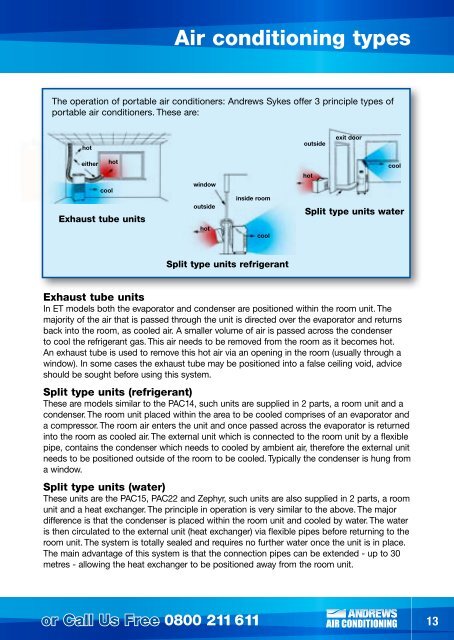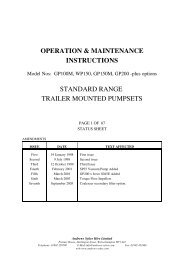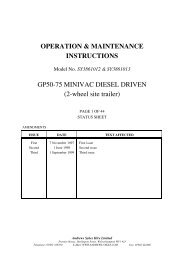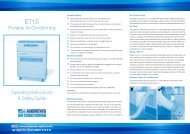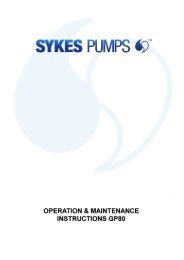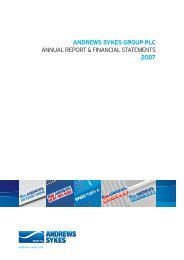Cooling & Heating - Andrews Sykes
Cooling & Heating - Andrews Sykes
Cooling & Heating - Andrews Sykes
Create successful ePaper yourself
Turn your PDF publications into a flip-book with our unique Google optimized e-Paper software.
Air conditioning typesThe operation of portable air conditioners: <strong>Andrews</strong> <strong>Sykes</strong> offer 3 principle types ofportable air conditioners. These are:hotoutsideexit dooreither hotcoolhotcoolExhaust tube unitswindowoutsidehotinside roomcoolSplit type units waterSplit type units refrigerantExhaust tube unitsIn ET models both the evaporator and condenser are positioned within the room unit. Themajority of the air that is passed through the unit is directed over the evaporator and returnsback into the room, as cooled air. A smaller volume of air is passed across the condenserto cool the refrigerant gas. This air needs to be removed from the room as it becomes hot.An exhaust tube is used to remove this hot air via an opening in the room (usually through awindow). In some cases the exhaust tube may be positioned into a false ceiling void, adviceshould be sought before using this system.Split type units (refrigerant)These are models similar to the PAC14, such units are supplied in 2 parts, a room unit and acondenser. The room unit placed within the area to be cooled comprises of an evaporator anda compressor. The room air enters the unit and once passed across the evaporator is returnedinto the room as cooled air. The external unit which is connected to the room unit by a flexiblepipe, contains the condenser which needs to cooled by ambient air, therefore the external unitneeds to be positioned outside of the room to be cooled. Typically the condenser is hung froma window.Split type units (water)These units are the PAC15, PAC22 and Zephyr, such units are also supplied in 2 parts, a roomunit and a heat exchanger. The principle in operation is very similar to the above. The majordifference is that the condenser is placed within the room unit and cooled by water. The wateris then circulated to the external unit (heat exchanger) via flexible pipes before returning to theroom unit. The system is totally sealed and requires no further water once the unit is in place.The main advantage of this system is that the connection pipes can be extended - up to 30metres - allowing the heat exchanger to be positioned away from the room unit.or Call Us Free 0800 211 61113


